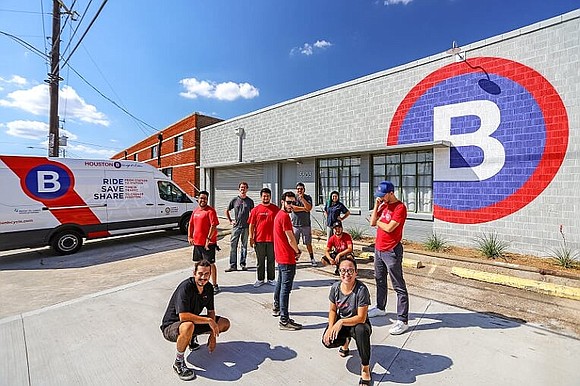Historical Character Preserved in one of Houston’s Oldest Neighborhoods
Style Magazine Newswire | 7/1/2020, 11:29 a.m.
East End Houston is home to one of the City's most iconic industrial sites. This historic area of town is home to an inventory of hidden gems that emerged during the early 20th century. More than 100 years later, many of these historical structures are being renovated for commercial and residential purposes while preserving original charm.
Restoring structurally sound buildings refers to a national urban trend called "adaptive reuse." Its goal is to recondition buildings for new uses while retaining historical features and preventing them from demolition. Adaptive reuse also offers many benefits. For instance, reconditioning maximizes the use of existing materials while achieving a faster turnaround for occupancy. By saving on demolition costs, energy consumption is automatically reduced, serving as an added benefit to the local environment.
Beyond the benefits of revitalizing a building lies the stories, deep within its walls. One of these iconic buildings is located on 5900 Canal Street. It was built during World War II and, for decades, it served as the beverage manufacturing plant of Crown Holdings, Inc. First established during the Progressive Era in the East Coast, this company is credited for inventing the crown cork bottle cap that has been use widely for generations and for transforming the can making process for food packaging.
According to historical data, during the war years, the company shifted its manufacturing to gas mask canisters.
In 2012, Harris County purchased the 286,704 sq ft. building, and in 2016, it invested over $8 million to restore its original exposed brick walls and concrete columns. The tall steel-frame windows that allowed plenty of natural light were reconditioned to comply with the current energy code. An industrial facility that once produced beverages now serves as the office for Precinct 6 Constable and Harris County District Clerk located on 5900 Canal St, Houston, TX 77011.
One of the outside walls of the building is also home to another striking visual landmark, “The Rebirth of Our Nationality” mural by artist Leo Tanguma. Originally painted in 1973, this massive and colorful mural depicts the struggles Mexican Americans face to overcome racism and adversity. In 2018, the county approved funding for the East End’s own GONZO247 to undertake a beautification project and revive the artwork.
A few blocks away from the old Crown building is another industrial facility with a historic past. Located on 5601 Navigation Blvd., this 15,000 sqft. structure was built in 1935. Historical records reveal that it was used for food canning and distribution. Because of the immediately adjacent barge docks facing Buffalo Bayou, the current owners believe the facility was part of the food supply during World War II. Over the years, it housed various salvage businesses including a neighborhood fixture known as “Houston’s Most Interesting Store.” Most recently, it was home to a long-time East End Houston boxing gym, The Knockout Factory.
In 2019, the facility was purchased by Kensinger Donnelly, a community-focused investment and project management company, and their local business partner Joe Meppelink, co-owner of the multidisciplinary design firm, METALAB (project architect). With a noble long-term vision, the investors embarked on a restoration process. The first phase is expected to be completed by the end of 2020. The goal of it is to maintain the building's original industrial appearance by exposing steel joists, reconditioning the hardwood decking, restoring the industrial lighting, removing interior walls and making improvements to the existing parking space. Frank Donnelly, President of Kensinger Donnelly, said, “With the adaptive reuse of these buildings, we worked to highlight their original architecture. We have found that tenants appreciate the preservation of these original features, also. Our hope is that we can continue to attract tenants with businesses that complement the public investment occurring in the area and have a positive impact on the community.” The first tenant of this building will be Houston Rental Studio.
Adjacent to the large warehouse is a completely renovated smaller building. It is currently housing the main office and workshop of Houston Bike Share.
The long-term objective of the owners is to offer space for both non-profit and for-profit companies that provide community resources within the area.
Across Buffalo Bayou on Clinton Drive lies a 12-floor structure, formerly the Kellogg, Brown and Root (KBR) campus. Built in 1975, the 360,000 square foot building is part of the future phase of East River, a multibillion-dollar residential and mercantile complex by Houston-based Midway. According David W. Hightower, Executive Vice President, Investment & Development at Midway, this building is “where a number of new technologies in the energy, chemical and aerospace industries were developed.” One of its key features is the “secure” room, which is impenetrable by electronic eavesdropping. While there are no immediate plans for the building, the tower has “large floors plates that can be adapted to meet the diverse needs for both commercial and residential occupants. The tower could be redeveloped as office space, a hotel, and even residential housing,” Hightower added. “Regardless of the use, the building has good bones and a commanding presence in area.”
According to Veronica Chapa Gorczynski, President of the East End District, “the East End has a long history of supporting logistics and distribution for our city, region and country because of its intermodal infrastructure. We’re grateful for the development community that values preserving the story of our historic neighborhood through adaptive reuse. As Houston continues to evolve to meet the demands of the 21st century, the East End District believes that it is important to preserve the historic role this community has played even in the most challenging times of America.”




